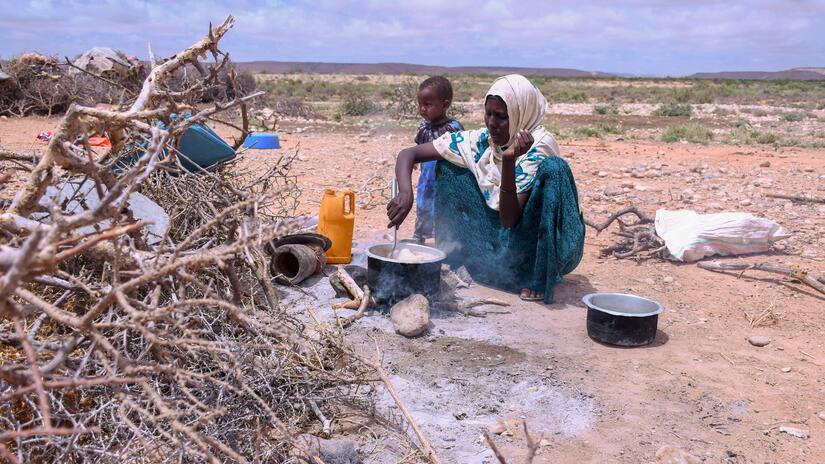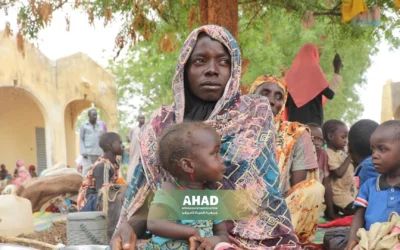Why is there still famine in Africa
Famine in Africa is an ongoing and complex problem rooted in a combination of historical, political, economic, environmental and social factors. Despite technological advances, improvements in agriculture and international aid, famine continues to recur in some African regions, raising questions about the underlying causes of this ongoing crisis.
The causes of persistent famine in Africa: a comprehensive analysis of historical, economic, environmental and social factors
Historical factors
Colonization
European colonialism in Africa has a profound and lasting impact on the continent’s economic and political structures. During the colonial period, the colonists formed local economies to meet their own needs. One of the most notable of these changes was the transformation of Agriculture from traditional systems of food production for the local population to the cultivation of cash crops such as cotton, coffee, and rubber, which were mainly intended for export. These changes have led to the destruction of traditional farming systems and the disintegration of local communities, forcing many Africans to rely on these cash crops instead of producing food necessary for local consumption. This transformation has made African societies more vulnerable to food problems in the event of global market fluctuations or the occurrence of natural disasters.
Civil wars and conflicts
Many African countries are experiencing armed conflicts and civil wars that damage infrastructure and prevent access to food resources. These conflicts lead to the displacement of the population from their areas, disrupt the processes of Agriculture and trade, exacerbating the problem of hunger and famine. Armed conflicts cause the destruction of agricultural land, loss of livestock, disruption of roads, hindering the transportation and distribution of food, and increase the suffering of the local population.
Economic factors
Poverty
High poverty rates in Africa are one of the main factors contributing to the persistence of famine. Many Africans live below the poverty line, leaving them unable to buy or produce enough food to meet their daily needs. Poverty hinders the ability to access resources necessary for agriculture such as seeds, fertilizers and tools, which leads to a decrease in agricultural productivity and increases dependence on external food aid.
Dependence on foreign aid
Many African countries rely on foreign food aid to meet their food needs. While such aid provides a temporary solution to food crises, it may create a situation of dependence and long-term unsustainability. Constant dependence on aid prevents the development of sustainable local solutions to food security and makes countries vulnerable to international political and economic fluctuations.
Environmental factors
Climate change
Climate changes are significantly affecting agriculture in Africa, as the frequency and severity of droughts and floods are increasing. Such conditions lead to a decrease in the productivity of agricultural crops and the destruction of Natural Resources, which increases the risk of famine. Climate change is causing weather patterns to change and traditional farming seasons to shrink, leading to lower yields and more severe food crises.
Desertification and land degradation
Desertification and land degradation lead to a decrease in soil fertility and a reduction in arable areas, which limits the ability to produce food and increases the dependence of the population on food aid. Desertification is the result of human activities such as deforestation and unsustainable agriculture, as well as climatic factors such as frequent droughts. Land degradation affects the ability of local communities to grow crops and raise livestock, leading to an acute shortage of food resources.
Social and political factors
Corruption and mismanagement
Corruption and mismanagement in some African countries are diverting resources away from vital sectors such as agriculture, health and education. As a result, support and resources are not being effectively directed to improving food security. Corruption leads to poor distribution of food aid, hinders the implementation of developmental agricultural projects, prevents the access of peasants to government support and necessary resources.
Rapid population growth
Many African countries are experiencing rapid population growth, which increases the pressure on food resources and infrastructure. Without improvements in agricultural and economic production, it is difficult to meet the needs of a growing population. Rapid population growth increases the demand for food, water and land, requiring sustainable agricultural and economic policies to ensure that the needs of the growing population are met.
Famine in Africa is a complex problem that requires a multifaceted solution that includes improving agriculture, fighting poverty, promoting environmental sustainability, and improving governance. Through international and local cooperation, sustainable improvements in food security and famine reduction can be achieved on the African continent. Africa needs comprehensive and sustainable solutions focused on strengthening local capacity and achieving food self-sufficiency to ensure a better future for its population.
Effective strategies to combat famine in Africa: sustainable and integrated solutions
Promoting sustainable agriculture
Promoting sustainable agriculture is the key to ensuring lasting food security in Africa. The focus should be on developing sustainable agricultural systems that include improving agricultural techniques, conserving soil and water, and encouraging the cultivation of diverse and drought-resistant crops.
1.The use of modern technologies such as drip irrigation, organic farming, and biofertilization can increase production efficiency and reduce wastage. Technology such as remote sensing and artificial intelligence can help monitor crop health and manage resources more efficiently.
Soil conservation techniques such as conservation agriculture, crop rotation, and mixed cropping can preserve soil fertility and reduce degradation. Sustainable management of water resources, such as rainwater harvesting and efficient irrigation, ensures the availability of water for agriculture in dry areas.
Growing diverse crops, including local crops that are more resistant to drought and pests, can enhance food diversity and reduce the risk of agricultural failure due to unfavorable climatic conditions.

Investment in infrastructure
Infrastructure development is a critical factor in improving food distribution and reducing waste.
Building efficient roads and transportation networks can ensure that agricultural products from farmers reach markets quickly and efficiently, reducing food waste and increasing agricultural profits.
The establishment of refrigerated storage warehouses and insect-resistant storage facilities can help reduce crop losses after harvest and maintain food quality for longer periods.
The construction of efficient irrigation networks and the use of solar and wind energy can enhance agricultural productivity in remote areas, contributing to improved food security in the long term.
Improving governance
Combating corruption and promoting transparency in resource management can lead to more effective use of financial support and international assistance, which enhances food security.
Enforcing strict anti-corruption laws and ensuring accountability of officials can ensure that resources are used effectively to achieve agricultural development and food security.
Improving information systems and transparency in the distribution of aid and resources can help to reach the actual beneficiaries and reduce waste and waste.
Raising awareness about proper nutrition and sustainable agricultural practices can help local communities achieve food security more effectively.
Education and outreach
Spreading knowledge about proper nutrition and the importance of food diversity can help families improve their food quality and overall health.
Providing training programs to farmers on the best sustainable agricultural practices, such as water management, the use of organic fertilizers, effective irrigation, can increase their productivity and reduce the impact of Agriculture on the environment.
Awareness of the importance of biodiversity in agriculture can help protect native species and increase resistance to natural disasters and diseases.
By implementing these integrated strategies, African countries can achieve sustainable improvements in food security and reduce famine. This requires coordinated efforts among local governments, international organizations, and local communities to ensure sustainable agricultural development and a better food future for the continent.
AHAD strategy for community development in Africa: promoting quality and sustainability
AHAD works in the heart of the African continent, focusing its efforts especially in the countries of Central and West Africa with the aim of improving the quality of life of the poor and disadvantaged in those regions. The organization’s projects cover vital areas including health, education, water, and economic development.
AHAD community development strategy
AHAD understands the unique nature of the communities she works with, which has led her to choose strategies that allow her to benefit from the skills and abilities of local individuals. These strategies are based on enhancing community participation and empowering local people to have an effective role in building their communities and achieving sustainable development. AHAD adopts the motto” because she deserves life”, and strives to realize this motto in every project she undertakes. The organization aims to make a positive and sustainable impact in the lives of the communities it serves by providing basic needs such as clean water and healthcare, improving the quality of education, and enabling individuals to actively participate in building productive and sustainable communities.
You can visit the AHAD website to find out more about the projects it offers
ALSO READ
WHAT THE FOOD BASKET CONTAINS IN AHAD
Join us in our message





